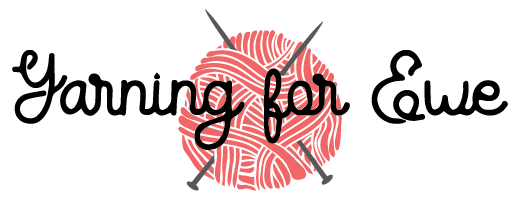Building in Lace
Building in Lace - Section 2
By now, you should be finished with Section 1, including the decrease row and the top border. (I recommend inserting a lifeline here). Now, you're ready to complete the set up row for Section 2, followed by Rows 2 through 4 of the lace pattern (read: stockinette stitch). The instructions are on page 16. Remember–you're skipping Row 1 after completing the Set Up Row.
I want to point out that the lace repeat consists of 20 rows, even though the written instructions only go up to row 19. Row 20 (and all even numbered rows) is a purl row.
In this sections, we're going to use yarn overs, k2togs, ssks, which you should already be familiar with. The new techniques we'll learn are PKOKs ("peacock" even though it does not look like a bird) and Japanese bobbles. Note that the Japanese bobble involves the Central Double Decrease you did in the Section 1.
Remember–these are new techniques. They might be awkward and fiddly, but they're definitely not scary.
If you've made bobbles before, you know they get tedious because you have to keep turning your work over and over and over for a handful of stitches. You can avoid the endless turning by "backwards" or "mirror" knitting. Staci Perry has a great video explaining backwards knitting. Yes, it's tedious and awkward at first, but it does get easier with practice. It's really handy for bobbles, short rowing, entrelac, and a few other techniques that involve turning your work several times to work only a few stitches at a time.
Also, here is a handy video by Patty Lyons demonstrating how to unknit decreases, including k2togs, ssks, and CDDs.
Building in Lace–Section 1
I recommend inserting a lifeline after completing the set up rows, and using markers to separate the lace repeats. I would also insert a lifeline after completing row 6 and/or row 14 once you have confirmed there are no mistakes. Make sure you have a tapestry needle and more scrap yarn handy.
We're going to use yarn overs, k2togs, ssks, and CDDs in this section. If you're unfamiliar with any of these stitches, I've linked to videos demonstrating each one.
If you forgot to make a yarn over, don't worry! You can simply make an afterthought yarn over, and here's a video showing you how to pick up dropped yarn overs.
Building in Lace - Getting Started
To begin this shawl, you will cast on using the Provision Cast On with scrap yarn. This way, you can eventually zip the scrap yarn out to reveal live stitches to complete the Saw Tooth Edging.
Your scrap yarn should be smooth and solid colored, and a different color than your main yarn. Mercerized cotton or mulberry silk yarns are great options.
This is my favorite way of doing the Provisional Cast On. It's fiddly, but you will have your stitches on your needle instead of chaining how ever many stitches you need, and then searching for the bumps to pick up afterwards.
After you're done casting on, chain a few more stitches, cut the scrap yarn leaving a tail, and pull the tail through the last chain to fasten off.
Because you'll be picking these stitches up towards the end of the project, it's a good idea to thread a lifeline through these stitches so they don't unravel when you pull the provisional cast on out months from now.
For your first row, you'll knit every stitch with your project yarn. After that, you will slip the first stitch of every row purlwise WITH THE YARN IN FRONT, and then take the yarn to back and knit to the end of the row. This creates a beautiful chained selvage that looks much nicer than simply knitting the first stitch every row.
Now you're ready to complete your first border and move onto Section 1!

